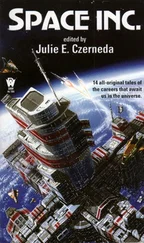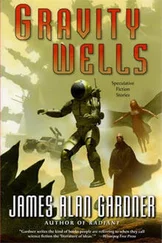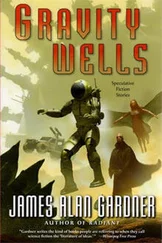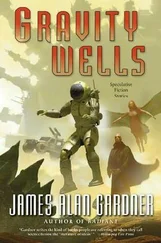Cap turned to Harley. “They will, of course, deny the request because to reduce sail area means to slow down. To slow down means to fall behind the Earth. To fall behind means that they’ll have to fire the ion engines to catch up… which means they’ll have to spend a lot of money. The question our Captain and CEO is now asking himself is why he should spend a lot of money and risk his performance bonus just to make a sail rigger’s job easier. The answer will be that he shouldn’t, that’s what we get paid for, and he’ll say no. Which should take him about… five… four… three… two… one… zero seconds to do.”
Exactly when Cap said zero, the radio scratched to life. “C3, Bridge.”
“C3.”
“C3, it has been determined that the repair as described can be effected without reducing area or spin. You have permission to go EVA and proceed with repair while observing all safety regulations and procedures. Space weather is in a no-warning condition.”
“Roger, Bridge.” Cap turned the radio off.
Harley brightened. “Actually, this is something I’ve always wanted to do. To be outside with nothing between me and the stars but a sheet of plastic over my face!”
Cap smiled grimly and nodded his head. “Well, a sheet of plastic and a couple of million miles of vacuum. Helmet on, Ace! It’s time you and Daddy went for a little walk, and we have to hustle. If we don’t get that beast fixed in short order, it could shred the whole sail. In the time it takes to mount a replacement sail, the whole ship would be unbalanced. To prevent that, they’d have to roll all sails, which would get really expensive! Then, since it will no doubt be our fault, you and Daddy will be out of a job No brave new galaxy for you. No comfy retirement for me.”
“Ace? Take hold of this sail clamp.” Cap handed Harley a device that looked like a spring clip that was six inches wide with padded strips where the clamp faces would come together on each side of the sail, squeezing it between them. “Clamp it there. Yeah, good. Now, pull! Harder!” Waving a hand at Harley to ease off, Cap stopped pulling. “Crap. It’s not going to work. Whatever tore through here must have taken a piece of the sail with it. Take your clamp and tie it off with a snap line so it will hold that piece of sail about where it belongs.”
“Does this mean they’ll have to let tension off the sail so we can fix it?” Harley asked.
“Not in this life,” Cap laughed cynically. “No. What that means is that instead of taking us half an hour to fix, it will take two hours. See, we have to get another piece of sail from the patch box on the back of our sailcreeper, then fuse it to this one and seal it down with the sealing kit. The glue stuff takes a long time to set, and we have to hold the sail in place until it does. One screwup and we start all over.”
Cap heard the sigh in Harley’s suit-to-suit microphone. Then Harley said, “Well, it’ll give me more time to look around, I guess.”
Cap laughed. “Yeah. That’s about all you’ll be able to do while it sets.” Then he called the bridge. “Bridge, C3.”
“Bridge.”
“Bridge, mere is a piece of sail missing here. We plan to effect a patch. Estimated repair time is two hours. Submitting modified recommendation.”
“C3, stand by.”
On his suit-to-suit radio Cap said, “Why don’t we go ahead and get the patch gear out while they’re dithering. It’ll save us some time.”
Harley answered, “But don’t they have to authorize us to use that stuff?”
Cap shook his helmeted head. “So what else are they going to do? Tell us to forget it; the ship is beyond repair and to call a tow truck? Come on. This thin stuff is really hard to corral if it gets away from you. And grab a couple more snap lines. We’ll use them to tie the stuff down until we’re ready for it. You set something down out here on the rim without attaching it to something and ka-zing! Off it goes into the dark, and your pay gets docked for the replacement. Ever price a wrench that has to come ten million miles?”
Once all the equipment and supplies were gathered, they settled back to take it easy until the official go-ahead. They were lying on the inner surface of the concentric ring looking “up” toward the rest of the ship. The inner rings and sail supports blocked the ship itself from view, and the glare of the reflected sun on the sails blotted out the stars on the sunward side, but they could see the stars streaking overhead on the shadowed side of it as they wheeled through space.
Bored, Cap decided to tease the kid. “If someone was on the top of this thing up there and fell, could we catch them before they dropped past us into space?”
Harley responded, “Nope.”
“Why not?” Cap asked.
“Well, I could give you the long-winded answer that they would go the other way because of centrifugal force, but that wouldn’t be as much fun. I think that if someone fell this way instead of that way, it would have to be Fat Jim. Fat Jim is so fat I doubt that even centrifugal force could budge him if he didn’t want to go. So, if he fell this way, it would be on purpose, and I don’t know about you, but I’m not getting under him!”
“Fat Jim?” Cap asked, thinking perhaps the teasing had been turned around.
“Yeah. He’s a guy I met on Earth who really wanted to come up here. He got perfect scores on all his tests, but he just couldn’t make weight. I heard a Company guy say that no matter how good Jim’s scores were they could spend the same money and boost three riggers up here instead of just one. Last I heard, Jim was still down there trying, but they might have changed their minds. Let’s face it. There are only just so many crazy people around.”
The radio call intruded on their stargazing. “C3, Bridge.”
“C3.”
“You are authorized to proceed with the repair plan as modified. Bridge out.”
“C3, out,” Cap said. Then in the suit radio he said to Harley, “Okay. Time to get to work.” He grabbed a sail clamp and held it up for Harley. “Now this is a sail clamp. If it looks familiar and the name sounds familiar, that’s because I just showed you one of these and told you about it a little bit ago. You even used one. It is not a doohickey. It is not a thingamajig. It is not a dweedle-bob. Learning proper nomenclature is important.” He handed the sail clamp to Harley.
“Now, you take that sail clamp and clamp it onto the sail, but not just anywhere. You must first locate an imaginary line-segment that runs from one edge of the sail to the other edge of the sail with no tears intersecting that line.” He took a marker from a pocket in his suit and eyeballed the sail material. After several false starts, he put the soft marker point on the sail and made a decisive line across the corner. “So. Then you apply your sail clamp anywhere on the tear side of the sail material.” He watched as Harley did so.
“Good. Next, you take another sail clamp and do it again only at a different spot. When the entire line is ‘edged’ with sail clamps, we take the snap cords and snap them to the little snaps on the sail clamps, so, and then pull them until our guts pop out, then hook the little hook on the other end of the line to a cleat. Then we tighten the cord with the little ratchet provided for that purpose, thereby stretching the material until it is as firm as a board.”
They hooked the snap cords to the sail clamps, then hooked the other ends to the cleats and tightened them down. “Next, we measure the size of the hole, add a factor of fifty percent, and cut the material.” Cap took a small cutter from another pocket and expertly slashed the sail material before returning the cutter to the pocket and reclamping the unused material to the ring.
Читать дальше












